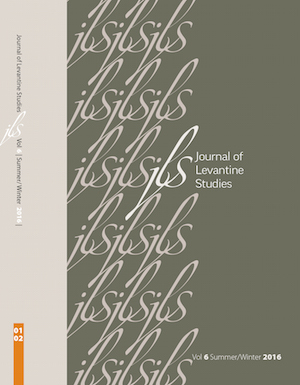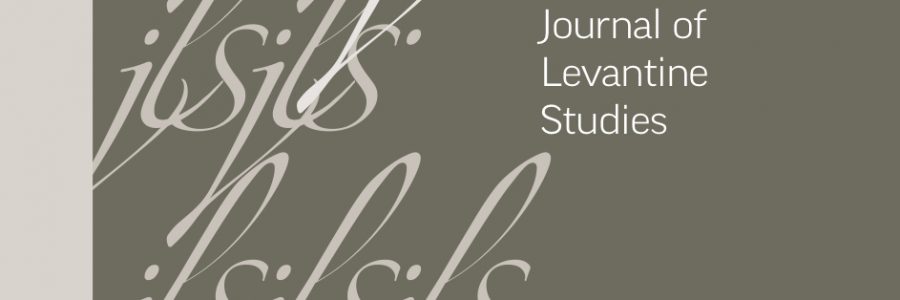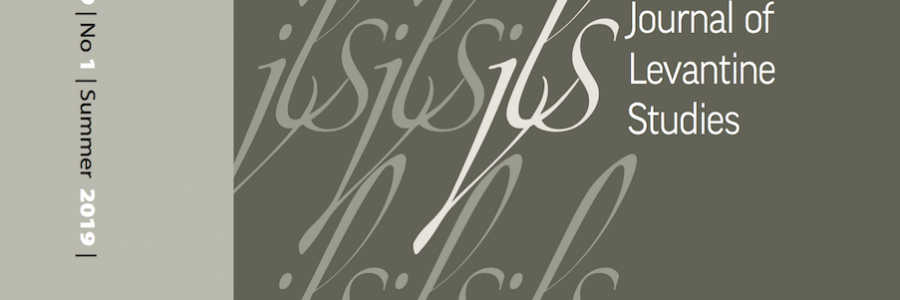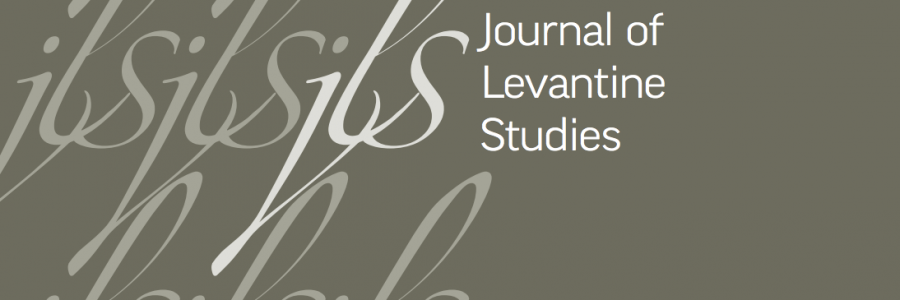-
Add to cartQuick view
Vol. 6, Summer/Winter 2016
Free!Add to cartQuick view -
 Add to cartQuick view
Add to cartQuick viewVol. 7, No. 1 Summer 2017
Free!Add to cartQuick view -
Add to cartQuick view
Vol. 7, No. 2 Winter 2017
Free!Add to cartQuick view -
Add to cartQuick view
Vol. 8, No. 1 (Summer 2018)
Free!Add to cartQuick view -
Add to cartQuick view
Vol. 8, No. 2 (Winter 2018)
Free!Add to cartQuick view -
Add to cartQuick view
Vol. 9, No. 1 (Summer 2019)
Free!Add to cartQuick view -
Add to cartQuick view
Vol. 9, No. 2 Winter 2019
$45.00Add to cartQuick view -
 Add to cartQuick view
Add to cartQuick viewWhat Is Anticolonial Translation? The Form and Content of Binational Resistance in Maktoob
Free!This essay examines translation as an anticolonial literary form in the context of contemporary translation theory and activist translation practices in Palestine/Israel. Analyzing the impact of colonial paradigms on language, culture, and translation, it demonstrates that Arabic-to-Hebrew translation practices have been used to both instantiate and challenge existing colonial structures. With a focus onMaktoob, the first Palestinian-Jewish translation collective, it goes on to analyze the methods used by progressive translation groups to resist racism, occupation, and colonialism and to democratize the Israeli cultural sphere over the past seventy years. It argues that Maktoob’s unique contribution to this tradition emerges from its commitment to a systemic decolonization of the processes surrounding translation. Binational, bilingual translation, the collective’s working model, combines content-based approaches with formal, linguistic, and structural innovations in translation processes. The explicit aim of this model is to erode colonial effects such as Orientalism, cultural erasure, ethnoseparatism, literary theft, and the linguistic division between Arabic and Hebrew, and to establish a model that promotes democratic cultural participation among Jews and Palestinians. The essay demonstrates the continued influence of cultural decolonization on contemporary literary production and offers new insights into what this means for translation theory and practice.
Add to cartQuick view -
Add to cartQuick view
Adel Manna. נכבה והישרדות: סיפורם של הפלסטינים שנותרו בחיפה ובגליל ,1956-1948 [Nakba and survival: The story of the Palestinians who remained in Haifa and the Galilee, 1948-1956]. Tel Aviv: Van Leer Institute Press and Hakibbutz Hameuchad Publishing House, 2017. 377 pp.
Free!Add to cartQuick view -
Add to cartQuick view
Creating Sepharad: Expulsion, Migration, and the Limits of Diaspora
Free!The expulsion of the Jews from Spain in 1492 represents one of the most significant diasporic moments in Jewish history. However, a shared diasporic consciousness among the exiles, what we might call the diasporic “stance” of the Sephardic world, was neither automatic nor universal. Rather, the interconnected challenges of migration, resettlement, and the re-formation of local and translocal communities was a process that endured for much of the sixteenth century, affecting the exiles and their descendants in different ways. This article traces the emergence of the Sephardic diaspora—both as a form of social organization and as a cultural concept—and explores the limits of Sephardic community and identity. My intention is to highlight the strengths and the limits of the diaspora model as a means of understanding the nature and development of Sephardic society in its formative phase.
Add to cartQuick view -
 Add to cartQuick view
Add to cartQuick viewDeclarations of (In)Dependence: Tensions within Zionist Statecraft, 1896-1948
Free!This article analyzes the relationship between dependence and independence in four foundational texts in the history of Zionist statecraft: Theodor Herzl’s The Jewish State of 1896, the Balfour Declaration of 1917, the Biltmore Program of 1942, and the Declaration of the Establishment of the State of Israel in 1948. These documents differ greatly in authorship, structure, and audience, but taken together, they illustrate the Zionist project’s convergence with and divergence from anticolonial projects and postcolonial states in the first half of the twentieth century. Both the political program that Herzl sketched out in The Jewish State and Chaim Weizmann’s lobbying during the First World War depended upon the good graces of Europe’s colonial powers. After the war, jubilation among Jews over the Balfour Declaration was accompanied by displays of gratitude, an emotion associated with conditions of dependence. Like anticolonialism in India, Zionism was cautious about demanding outright independence, although the Zionists’ dependence upon Britain was far greater given their status as a minority of Palestine’s population, facing a hostile Arab majority. When the Zionists did demand independence in the Biltmore Program, they also acknowledged their ongoing dependence upon Britain, which they called upon to fulfill its Mandatory responsibilities. In 1948 the Zionists did not separate from Britain so much as Britain separated from Palestine. The Palestine war of that year was a struggle between Israel and Arabs, not between Israel and Britain. Accordingly, the state’s founding declaration was an assertion of creation, not separation, and of sovereignty, not independence from another power. Nonetheless, the document reflected dependence on the international community that had approved Palestine’s partition in November 1947.
Add to cartQuick view
- Home
- About JLS
- Issues
- Vol. 9 No. 1 | Summer 2019
- Vol 8 No 2 Winter 2018
- Vol. 8, No. 1: Summer 2018
- Vol. 7, No. 2: Winter 2017
- Vol. 7, 1: Summer 2017
- Vol. 6, Summer/Winter 2016
- Vol. 5, No. 2 Winter 2015
- Vol. 5, No. 1 Summer 2015
- Vol. 4, No. 2 Winter 2014
- Vol. 4, No. 1 Summer 2014
- Vol. 3, No. 2 Winter 2013
- Vol. 3, No. 1 Summer 2013
- Vol. 2, No. 2 Winter 2012
- Vol. 2, No. 1 Summer 2012
- Vol. 1, No. 2 Winter 2011
- Vol. 1, No. 1 Summer 2011
- Blog
- dock-uments
- Subscribe
- Submit
- Contact








